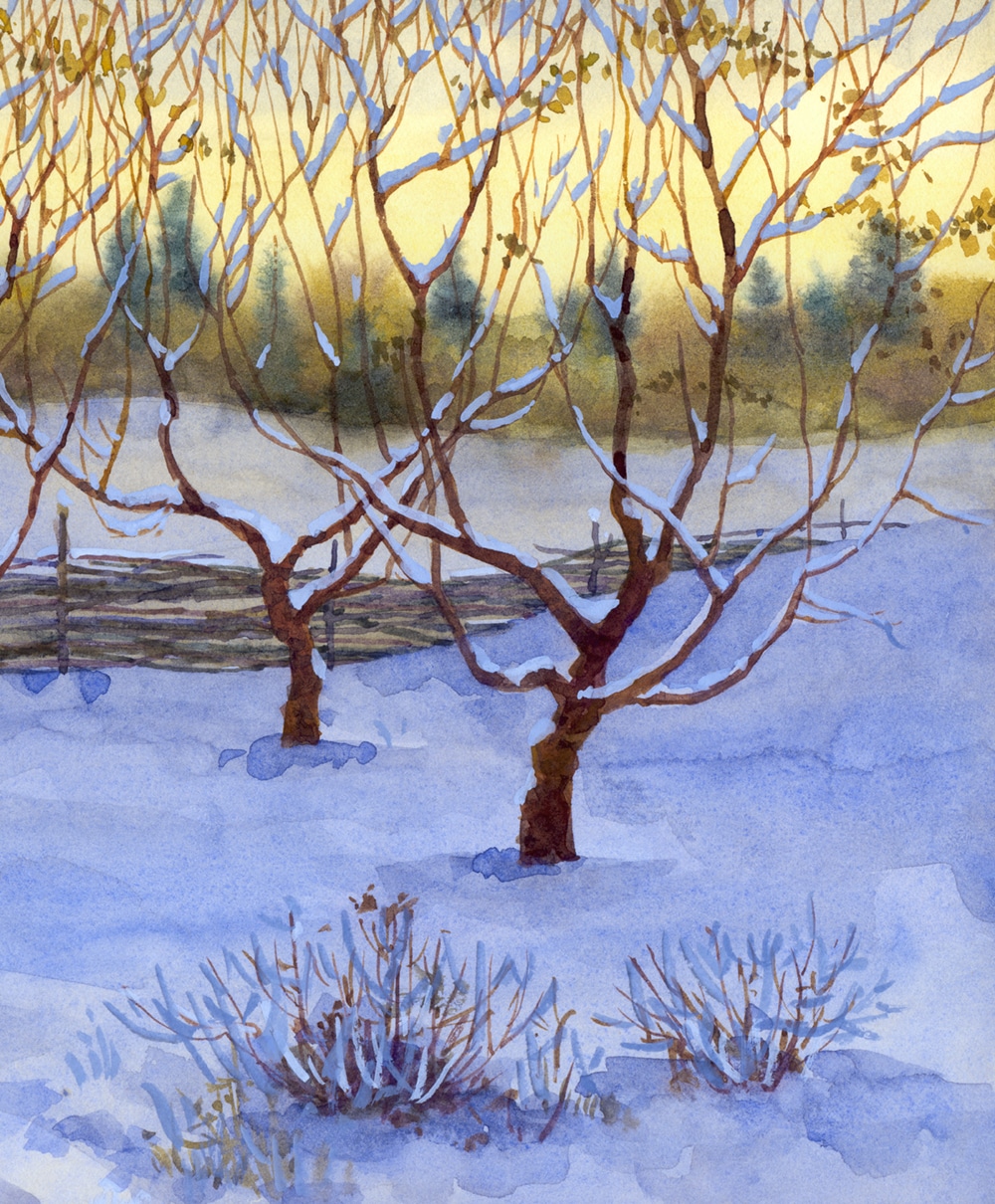These past few weeks have been a trial of extreme weather here in New England, causing extensive damage to many trees and shrubs. We still have some time to go before the snow finally fades away this year, but many gardeners are already anticipating major cleanup once the weather improves. Here are some remedial suggestions for the various types of plant damage you’re likely to encounter in your yard.
Discolored foliage on rhododendron, holly, Kalmia and other broadleaf evergreens:
Although wind, sun and salt-damaged evergreen foliage looks unsightly now, new growth by mid-spring will likely restore their appearance, as damaged leaves drop-off or are hidden by new growth. Wait until June to assess recovery before removing branches that look dead now. Avoid fertilizing any winter-damaged plants; adding nutrients to recovering plants can force excessive soft growth, weakening the plant.
Branches crushed and torn on shrubs:
If they are not broken, flexible laid-down branches on many shrubs like boxwood, holly, azalea, yew and juniper may recover: gently pull them back up, holding them in position if needed with twine to coax them to grow back to their desired shape. Cut-off all torn and broken branches below the break. When seriously damaged, the entire shrub may need re-shaping, enabling latent buds to grow and fill-in gaps. Prune or shear to develop a wide “A” shape (not an “I” or “V” shape); this helps develop stronger lower branches, encouraging stiffer structure more resistant to next winter’s snow and ice damage. Most damaged shrubs benefit from heavy cut-back, allowing new growth to restore their appearance, albeit smaller than before the injury.
Split branches on trees and large shrubs:
If they are only partially separated, important split branches on horizontally-branched plants like cut-leaf Japanese maple, dogwood and rhododendron may be repairable. Gently pull the split branch to the main trunk, hold temporarily with tape or twine, drill a small hole and insert a bolt, tightening the nut to secure the two sections together. Often it’s better to cut-off the split branch and allow the main stem to heal, enabling undamaged branches fill-in the spaces.
Deer-browsed leaves and needles:
Deer-browsed broadleaf evergreens like rhododendron and holly will usually recover with new foliage by late spring. Unfortunately, stripped-off foliage on needled evergreens like arborvitae, yew and hemlock does not regrow as well. If you see no new growth by the end of June, it may be best to remove those now-bare branches back to the trunk; try under-planting with “face-down” deer-resistant shrubs like Leucothoe, boxwood and Andromeda (Pieris) that help hide the missing lower branches.
Stems and trunks girdled by rodents:
Fruit trees, maples, viburnum, cotoneaster and many other soft-bark trees and shrubs are susceptible to vole- and rabbit-browsing on their stems. Bark slightly gnawed or notched usually heals and recovers naturally without treatment. Any branch girdled more than 2/3’s around should be cut off below the damage. Multi-stemmed shrubs that retain some undamaged stems will re-grow, but trees with all trunks girdled will probably not recover. Be aware that even fully-girdled plants may appear normal, blooming and leafing-out well, only showing their true health as their food reserves are exhausted.
In general: Losing plants to winter damage is disappointing and unfortunate. But now is the right time to consult with your local garden center experts for recommendations to protect susceptible plants from next winter’s challenges. And lots of exciting new brands of trees and shrubs are now coming on the market this spring; those unexpected gaps in your garden offer a fine opportunity to make some welcome changes and add a new level of interest to your yard.







